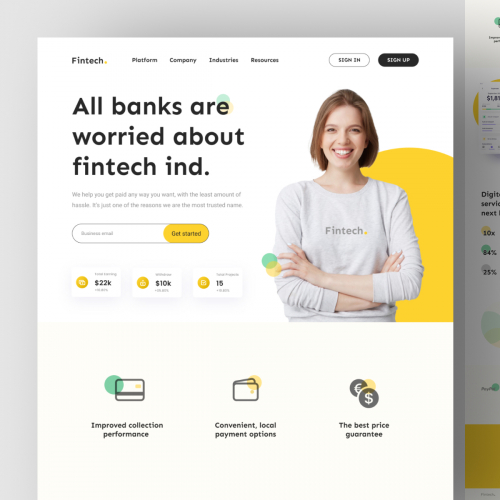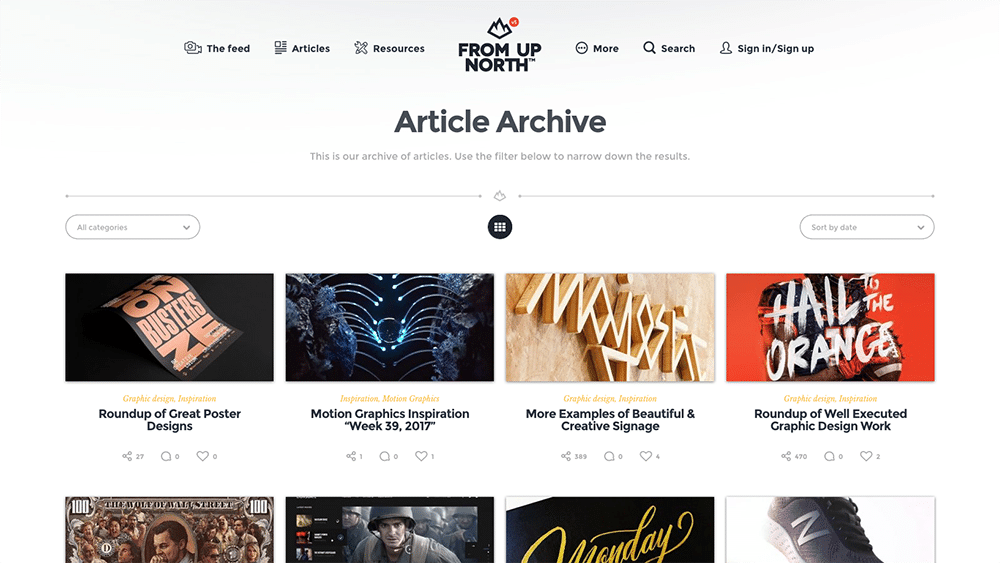Modern Web Site Style That Catches Attention and Converts
In a progressively electronic landscape, contemporary site layout has emerged as an essential variable in capturing individual focus and driving conversions. As we explore these important components, it ends up being clear that recognizing their interaction can dramatically influence an internet site's efficiency and customer complete satisfaction.
Value of Visual Power Structure
Aesthetic hierarchy is a crucial component in internet site layout, as it overviews individuals' interest and enhances their total experience. By purposefully arranging web content, designers can direct users to the most crucial info first, thereby raising engagement and improving use. Reliable visual power structure uses numerous methods, including dimension, comparison, spacing, and color. Bigger elements naturally draw the eye, while contrasting colors can highlight essential messages, making them stand out amongst even more restrained components.
Including a logical circulation in material arrangement is essential; for example, placing one of the most important info on top of a page fosters prompt recognition. Regular usage of typography, such as differing font dimensions and styles, helps establish a clear content framework. This organization not only aids in navigating yet additionally builds trust, as users really feel much more comfy when they can conveniently find what they are trying to find.
Ultimately, a well-executed visual pecking order not only boosts aesthetic charm however additionally significantly affects individual actions. By focusing on crucial aspects and making certain a smooth experience, developers can properly transform site visitors right into clients, strengthening the significance of this fundamental layout concept in modern-day internet site advancement.
Responsive Layout for All Gadgets
Producing a seamless experience across different gadgets is necessary in today's electronic landscape, where individuals access web sites from tablets, desktops, and smartphones alike. Receptive layout is a vital strategy that makes certain web sites adapt fluidly to various display alignments, sizes, and resolutions. By utilizing flexible grids, images, and CSS media queries, developers can produce layouts that maintain visual integrity and capability, regardless of the tool being used.
The relevance of responsive layout prolongs past aesthetics; it straight impacts customer involvement and conversion rates. A website that works well on all tools encourages longer visits and lowers bounce rates, as customers are most likely to communicate with web content that is easy to navigate. Moreover, internet search engine, particularly Google, focus on mobile-friendly websites in their rankings, making receptive design a crucial component of search engine optimization (SEARCH ENGINE OPTIMIZATION)
Including responsive layout not only improves individual experience yet likewise streamlines the advancement process. By developing a solitary website that works across gadgets, services can conserve time and resources contrasted to creating different mobile and desktop computer versions. Inevitably, receptive layout is a basic approach for modern website design, guaranteeing availability and complete satisfaction for all individuals, no matter their device.
Engaging Interactive Elements
While a responsive style prepares for a useful website, incorporating engaging interactive elements is crucial for catching individual attention and fostering deeper links. Website Design. Interactive aspects, such as animations, quizzes, and clickable infographics, create a more vibrant individual experience, motivating visitors to invest more time on the site
Including interactive attributes can additionally assist customers via complicated info, making it simpler to digest material. For example, interactive sliders can illustrate product variants, while embedded videos can provide demos or endorsements that reverberate even more than static photos or text. Furthermore, gamification techniques, like benefits for engaging or finishing jobs with material, can boost individual motivation and retention.
Efficient use of interactive elements not only enhances the customer experience but can additionally lead to higher conversion rates. It is important to balance interactivity with efficiency; excessively complex functions may impede site rate, negatively impacting customer contentment.
Streamlined Navigating Practices
Effective navigation is a foundation of any successful site, as it straight affects user experience and web content accessibility. Streamlined navigating practices ensure that individuals can quickly find information, enhancing their interaction with the site. A well-structured navigating menu ought to be user-friendly and basic, usually featuring a restricted variety of primary classifications to prevent frustrating site visitors.
To accomplish streamlined navigating, designers need to prioritize an ordered framework that realistically organizes content. Executing breadcrumb tracks can provide customers with context concerning their current location within the website, enabling for seamless backtracking. Additionally, using drop-down food selections can properly save area while still offering access to subcategories.
Receptive layout is essential, as navigating needs to be practical throughout all devices (Website Design). Mobile users, specifically, gain from touch-friendly menus and retractable sections that keep use without endangering aesthetic appeals

Effective Call-to-Action Strategies
A well-crafted call-to-action (CTA) is necessary for assisting users toward preferred end results on a site, as it encourages them to involve with web content or make a purchase. To maximize their efficiency, CTAs need to be clear, compelling, and tactically put throughout the website.
First, use action-oriented language that interacts seriousness or worth, such as "Start," "Sign up with Now," or "Insurance claim Your Discount rate." This language hop over to here not just motivates users yet likewise sets clear expectations regarding the following steps.
Second, take into consideration layout elements; CTAs should stick out visually through contrasting colors, enough whitespace, and prominent positioning. A switch that is easy to see and click rises the possibility of customer interaction.
In addition, individualizing CTAs based on customer behavior or demographics can dramatically boost involvement. Tailored messages resonate a lot more with users, driving greater conversion rates.

Conclusion
In conclusion, modern-day website style stresses the combination of aesthetic hierarchy, receptive formats, engaging interactive components, structured navigating, and reliable call-to-action strategies. These components collectively boost customer experience, making sure that visitors stay engaged and motivated to explore material additionally. By prioritizing these layout concepts, businesses can substantially boost customer retention and conversion rates, inevitably bring about better success in the electronic landscape. The continual development of website design underscores its vital function in efficient online communication and advertising.
In a progressively electronic landscape, contemporary site design has actually emerged as a crucial variable in catching individual attention official statement and driving conversions.Visual power structure is a critical element in website layout, as it overviews customers' interest and enhances their total experience.The significance of responsive style extends past aesthetics; it straight impacts user engagement and conversion prices.Incorporating receptive style not just boosts individual experience but additionally improves the development process. Eventually, responsive style is a fundamental method for modern website layout, guaranteeing accessibility and contentment for all users, no matter of their device.